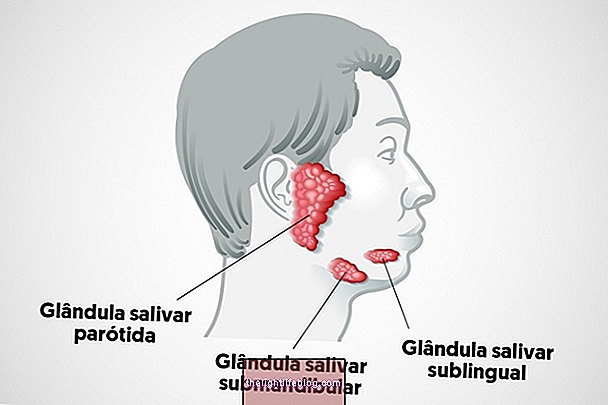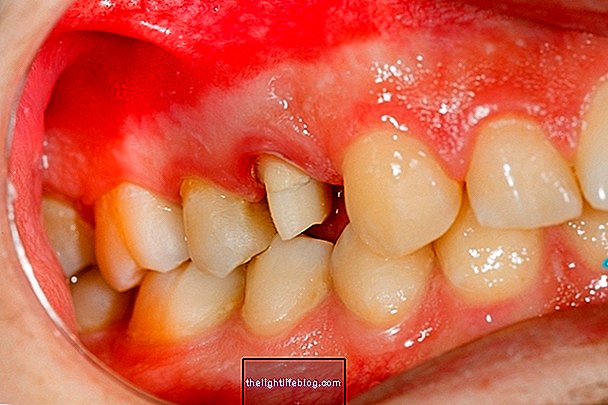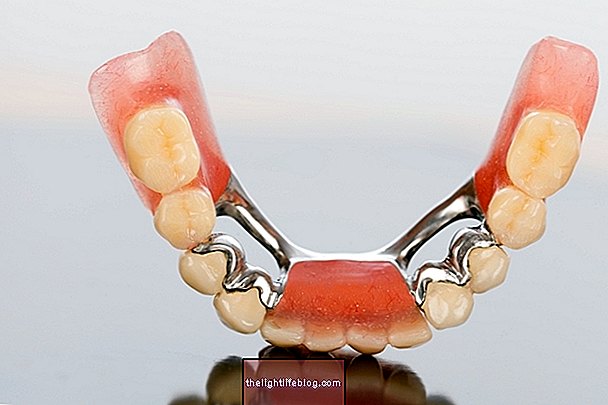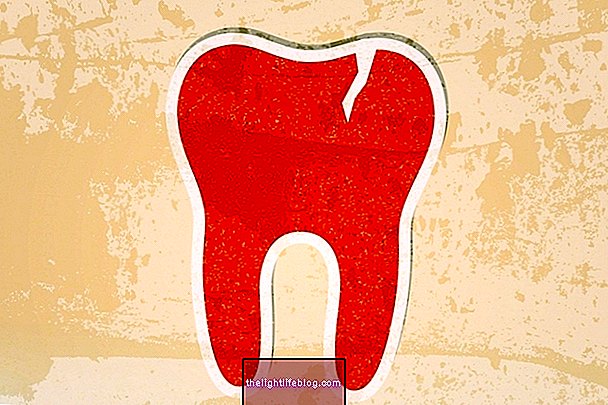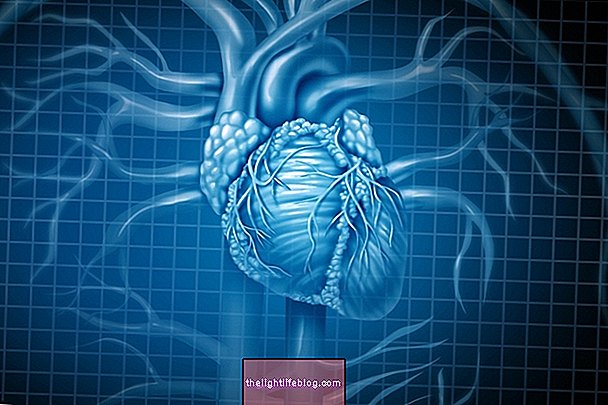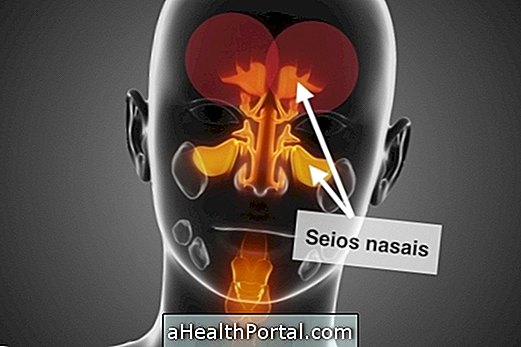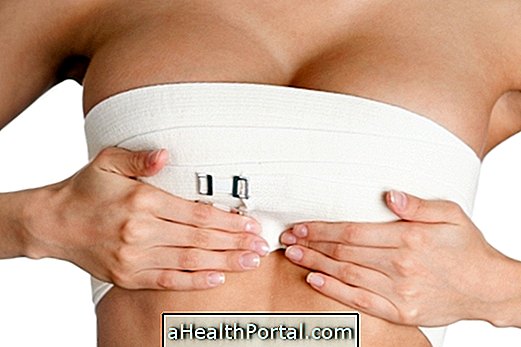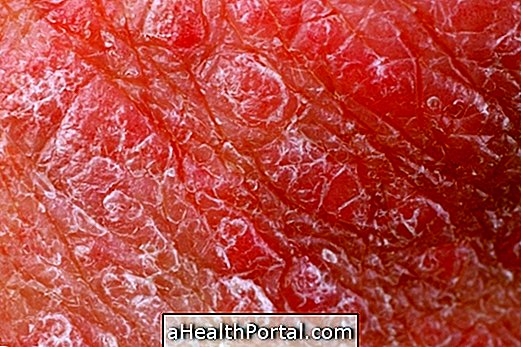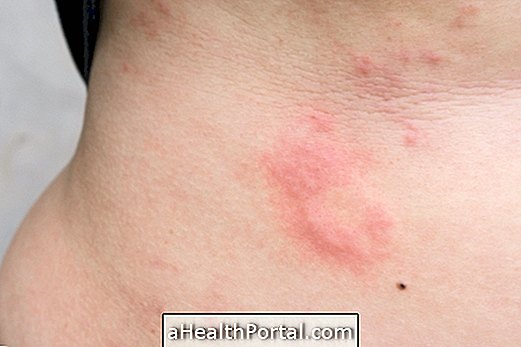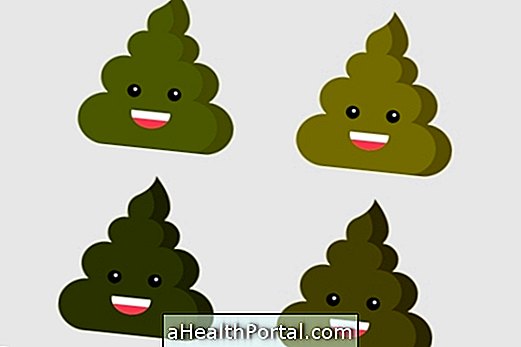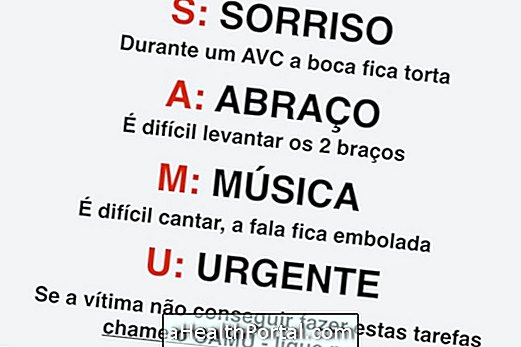To prevent the development of cavities and bacterial plaque on the teeth it is essential to brush the teeth at least 2 times a day, one of which must always be before bed, because at night there is a greater chance of bacteria accumulating in the mouth.
For toothbrushing to be effective fluoride paste should be used from the birth of the first teeth and maintained throughout life to keep teeth strong and resistant, avoiding the development of caries and other oral diseases such as caries and gingivitis, which cause pain and difficulty in eating, for example.
How To Properly Brush Teeth
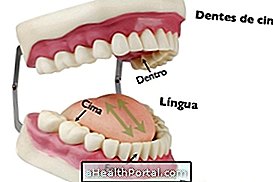

To keep your teeth and gums clean and healthy:
- Put toothpaste on the brush that can be either manual or electric;
- Put the brush bristles in the region between the gum and the teeth, making circular or vertical movements, the gum out, and repeating the movement for about 10 times, every 2 teeth. This procedure should also be done on the inside of the teeth, and to wipe the top of them, you should make a back-and-forth movement.
- Brush the tongue by making back and forth movements;
- Spit out excess toothpaste;
To chew a little mouthwash, to finish, like Cepacol or Listerine, for example, to disinfect the mouth and eliminate bad breath, can be a good habit to maintain a good oral hygiene.
Toothpaste must contain fluorine in its composition, in quantities between 1000 and 1500 ppm, information that is registered on the package label of the toothpaste under the name sodium fluoride and can be purchased at the supermarket, drugstore or pharmacy. needing to be a specific or expensive brand.
The ideal amount of paste to use is about 1 cm for adults, and that corresponds to the size of the finger nail or the size of a pea in the case of children. See more tips on how to choose the best toothpaste for adults and children.


To avoid developing caries, in addition to brushing your teeth properly it is important to avoid eating foods high in sugar, especially before going to sleep. However, other foods can also damage the teeth causing sensitivity and blemishes, such as coffee or sour fruits, for example.
In addition, it is also important to drink water throughout the day to keep saliva in the mouth which helps to eliminate bacteria naturally and avoid smoking. To prevent the onset of cavities know more foods that harm the teeth.
How to brush your teeth with orthodontic appliance
To brush your teeth with an orthodontic appliance, you should use a regular brush, and start with circular movements between the gum and the top of the brackets, with the brush at 45º, removing the dirt and plaques that may be in this region.
Then the movement should be repeated in the lower part of the brackets, also with the brush at 45º, also removing the plate at this location. Then the procedure inside and above the teeth is the same as explained in step-by-step.
The interdental brush can be used to reach hard-to-reach places and to clean the sides of the brackets, as it has a thinner bristle tip and is therefore very useful for those who wear appliances or who have dentures.
In case you have to brush your teeth or your family member's dentures see the video:

How to maintain toothbrush hygiene
To maintain toothbrush hygiene it should not be shared with others to reduce the risk of developing cavities and other infections in the mouth and should be stored in a dry place with the bristles facing upwards protected with a cap.
The toothbrush can be manual or electric and should have soft, soft bristles to avoid damaging the gums and causing bleeding.

When the bristles of the brush begin to become crooked one should replace the brush with a new brush, which usually occurs every 3 months. It is also very important to change the brush after a cold or flu to reduce the risk of having a new infection.
When to go to the dentist
To keep your mouth healthy and without decay you should go to the dentist at least 2 times a year to assess your mouth and detect early dental problems, or as your dentist has indicated.
In addition, other symptoms that indicate a need to go to the doctor include bleeding and pain in the gums, constant bad breath, stains on teeth that do not go out with brushing or even sensitivity to teeth and gums when eating cold, hot or hard foods.
Cavities are the main cause of pain and inflammation, so see what to do in case of toothache.

